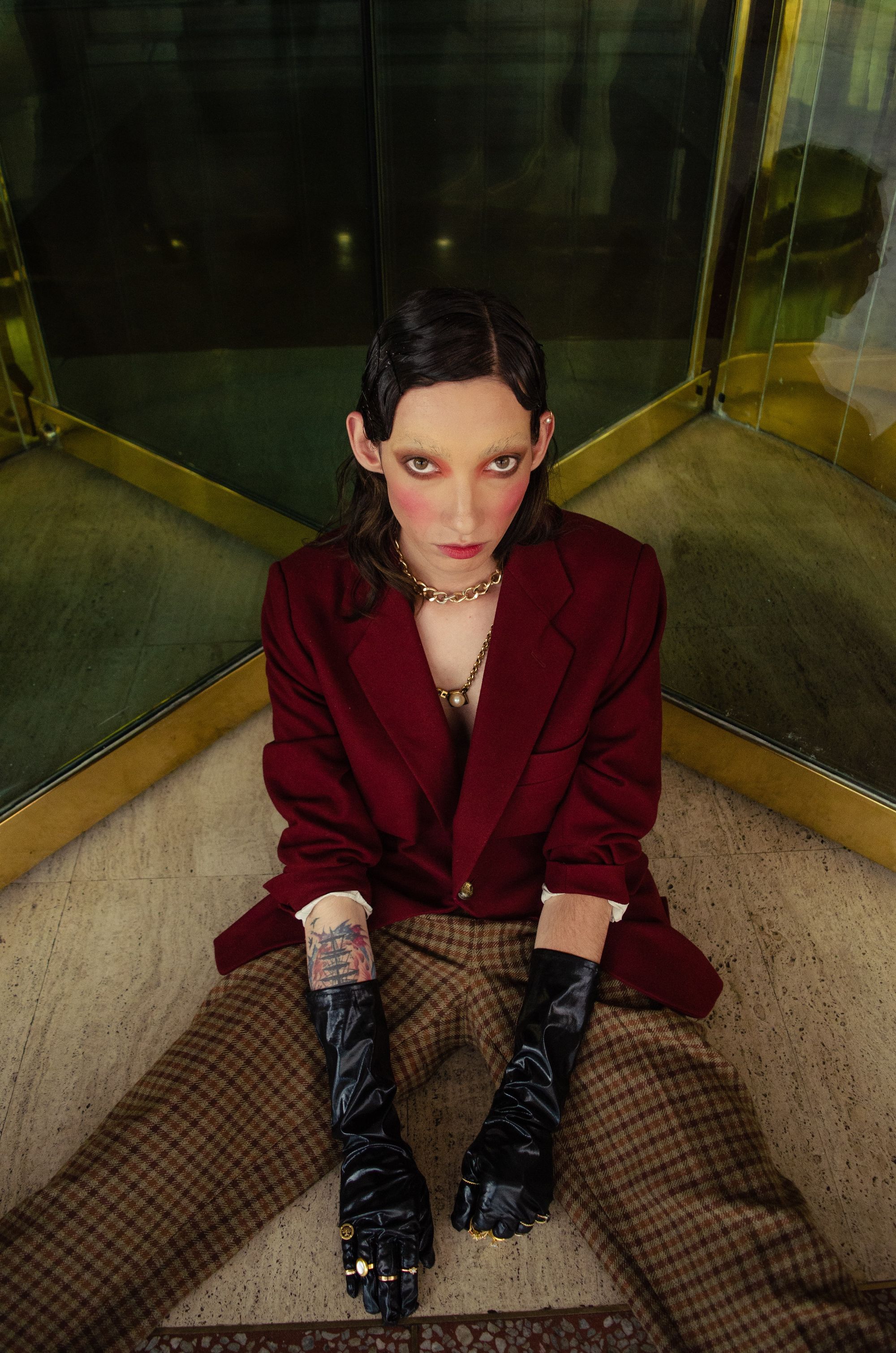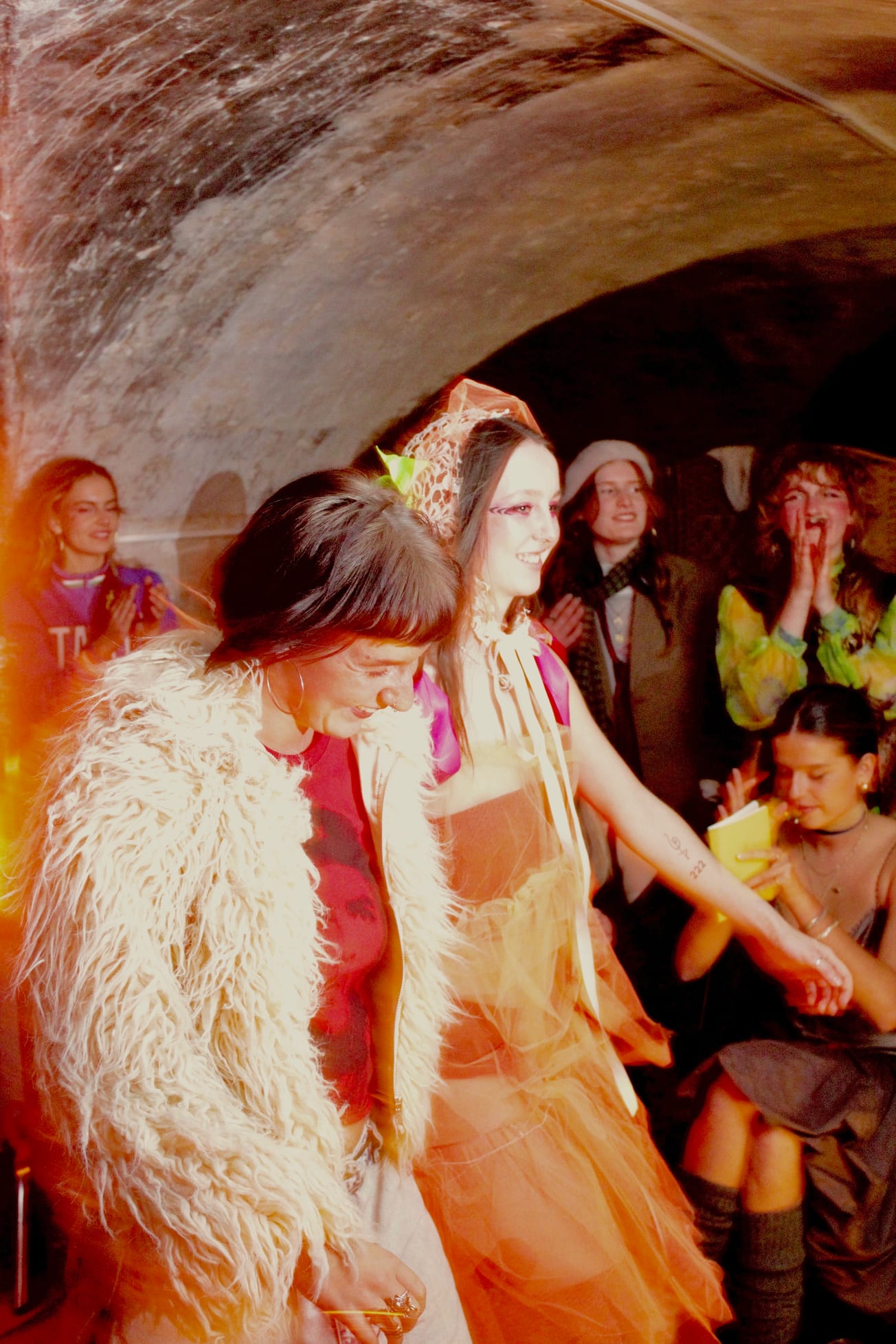By Sophie Brassey, Third year, Philosophy
The Croft Magazine // Instant digital content seems to demand ever more bizarre and theatrical stunts on the runway. Reviewing the SS23 shows, we ask how far fashion needs to go to seek attention, and what is the cost of this creativity.
The SS23 runways were gimmicky, slightly off-beat, and entirely mad - but they had to be. In a world where trends go out of vogue before they can even take off, designers must do what they can to hook the digital audience. With the mass production of fashion, and the obscene number of up-and-coming designers, sending a slightly edited version of the Bar suit down the runway wasn’t going to cut it this year - yes Maria Grazia Chuiri, we're talking to you. This season, fashion demanded camp, and camp we got.
From spray-painting a naked Bella Hadid à la Banksy, to sashaying down the runway with a petrol station snack essential (see Balenciaga’s crisp packet bags) creative directors gave us a dose of theatrics to last us until next year. The pure absurdity of certain designers cough cough, kanye had us in two minds about this new approach to fashion. Is runway being reduced to desperate grabs for attention, or is there something much more promising on the horizon? Are these avant-garde statements genius, or simply daft?
Don’t get me wrong, there were certainly some beautifully executed collections this season. Some of our favourites being Molly Goddard’s ruffle and tulle extravaganza, Maximilian Davis’s skillful tailoring for his debut at Ferragamo, and the architectural genius at Han Kjøbenhavn in Milan. These designers, with many others, provided polished works of art.
However, creative directors for some of the biggest fashion houses took an avant-garde approach to recent collections instead. This meant rather than developing the physical design of their clothes, designers put more energy into furthering the concept behind clothing, and fabricating a theatrical show to portray such ideas. The use of twins at Michelle's Gucci was a perfect example of this: he wanted to end the stigma that one-of-a-kind pieces are a quintessential element to fashion, so sent twins dressed in the same outfit down the runway.
Much of the innovativeness showcased on the catwalk is a ruse for the more basic clothes that are produced for retail; the runway is a place for absurd creativity that usually never makes its way to the shop floor. But, as we are all aware, it's becoming pretty hard to produce a ‘never seen before’ collection. Anyone can be creative, anyone can develop an idea, and anyone can access and comment on such collections. Perhaps it is this exhaustion of creativity in fashion that has reduced runway to gimmicks. Rather than focussing their time materialising a creative concept, designers are looking for other ways to call attention to a collection. From a business mindset, they are simply working smarter not harder: Demna’s swamp-esc set design doesn't exactly add to the clothes, but it did get people interested in what's new at Balenciaga.

The headlines read themselves: “Every Models Stacked it at AVAVAV”, or “Coperni’s Spray-On Bella Hadid Dress Is Fashion Magic”. While these stunts were entertaining, they didn’t necessarily add anything to the collection. The Bella Hadid spray paint dress didn’t offer anything new - it would bode well as a scientific experiment, but in terms of fashion, the dress itself was uninspired. Many articles called to mind the Alexander Mcqueen 1999 show, where Shalom Harlow stood on a spinning platform whilst her dress was painted yellow and black by a robotic arm. Rachel Tashjian (the icon herself) phrased the difference between the runways best: “I struggled to see or feel anything other than discomfort at Hadid bending her arms and legs to the whims of these two men and their canisters”. Mcqueens 1999 stunt was a metaphor reflecting the violence that creativity imposes on its materials and its audience. Coperni’s stunt, for all we know, was a metaphor for how lack of creativity breeds unoriginality.
From this point of view, the gimmicks during SS23 are a waste of time and headlines - surely we should be talking about something more groundbreaking? What about the other collections that have been ignored because Paris Hilton closed Versace?
When you really think about it, we’re being a bit pretentious here. There is something to be said in defence of the fashion gimmick. Not every show has to give something completely groundbreaking; having a shock aspect is all part of the fun, and everyone loves a good celebrity appearance. The use of gimmicks isn't completely new in fashion, and it is aiding Haute Couture in becoming more mainstream. Perhaps what we should be asking is what this means for the future of runway: how far will designers go?
Featured image: Haley Lawrence
Do you think designers are taking fashion too seriously? Let us know!









